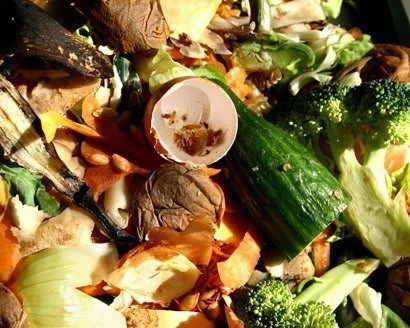How To Cut Down On Food Waste This Thanksgiving
How much thought have you given to food waste lately? Probably not much. But it's a growing problem with major consequences. Dana Gunders, a project scientist working out of San Francisco with the Natural Resources Defense Council (NRDC), specializes in issues of food and agriculture and also contributes to the NRDC staff blog Switchboard. Gunders has studied issues of food waste for some time, and with the arrival of Thanksgiving and the upcoming holiday season, she has expressed some particular concerns.
Here are some staggering statistics from the NRDC:
- This Thanksgiving, Americans will toss a whopping $282 million of uneaten turkey and about 204 million pounds of that turkey meat into the trash, attributing to the $165 billion in uneaten food Americans waste every year.
- The USDA reports that 35 percent of perfectly good turkey meat in the U.S. does not get eaten after it is purchased by consumers (and that's not including bones). This compares with only 15 percent for chicken, "possibly because turkey is more often eaten during holidays when consumers may tend to discard relatively more uneaten food than on other days," the USDA writes.
- Along with the meat, Americans will be wasting the resources necessary to produce that 204 million pounds of turkey that never gets eaten — meaning 105 billion gallons of water, enough to supply New York City for more than 100 days, and nearly 1 million tons of greenhouse gas emissions, equivalent to 800,000 car trips from New York to San Francisco.
- That is nearly enough turkey to provide each American household that is food insecure with more than 11 additional servings. According to the USDA, 17.9 million households in the U.S. are food insecure.
- Per pound, the resources needed to produce that turkey are equivalent to driving your car 11 miles and taking a 130-minute shower (at 4 gallons per minute).
What causes all this waste? Gunders points out four big culprits. First of all, she notes that the size of dinner plates at home, on average, has grown by 36 percent between 1960 and 2007. From a psychological standpoint, people usually feel the need to fill their plate, so a larger plate means larger portions.
This contributes to the second problem, which she calls a "mismatch between shopping and actual eating." Gunders points out that people often don't have a plan when they go to the store to shop for food, and just buy whatever is on sale. This often leads people to buy more than they need ("I should really stock up on chicken while it's on sale") and then they have no idea what to make with those ingredients when they get home, and often just end up doing takeout.
Third, people find the date labels confusing. While date labels do come in handy, the variation in terminology (sell by, use by, and enjoy by, to name a few examples) causes confusion, and sometimes leads to perfectly good food being thrown out. "Sell by," for instance, is used to guarantee food has shelf life after a consumer takes it home — more useful to the retailer than the consumer. Because of the confusion, more than 50 percent of perfectly good food is thrown out by the "sell by" date, according to Gunders. The whole reason we have an expiration date system, though, is that people have trouble figuring out whether their food is still good to eat.
But this is the cause of the fourth problem. People should be using their freezers more often. Freezers are underutilized, Gunders says, and many foods that would otherwise be thrown out could be saved from the bin just in the nick of time if people started using their freezers for other things besides processed foods.
Basically what all of this means is that food waste is such a big problem simply because people aren't really thinking about it.
So what can be done? Gunders offers a few simple tips for home cooks to help cut down on food waste during Thanksgiving and throughout the holiday season:
- Be realistic when you're planning your meal about how much you need. About 1 to 1 ¼ pounds of turkey on the bone is enough for one person.
- Buy "funny fruit" — fruits and vegetables that may be slightly misshapen, a little smaller than the norm, or that "just made the cut." In selecting perfectly aesthetic produce, we perpetuate a system where only perfect-looking produce make it to the end, says Gunders.
- Freeze leftover stock, trimmings, and cooked meat for use in sauces, sandwiches, pizzas, soups, and anything else you can think of. Click here to see What to Do with Your Thanksgiving Leftovers.
Click here to see The Daily Meal's Guide to Thanksgiving
Will Budiaman is the Recipe Editor at The Daily Meal. Follow him on Twitter @WillBudiaman.
